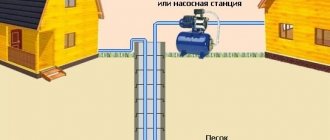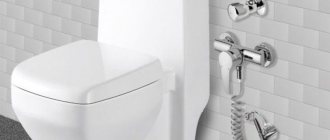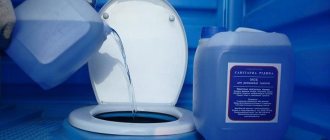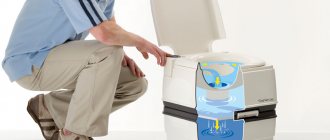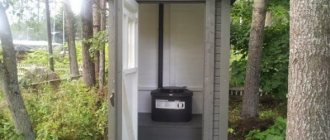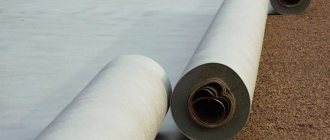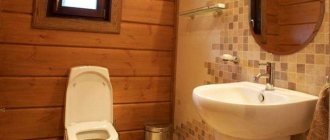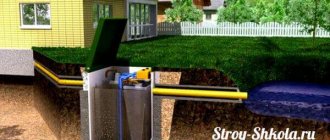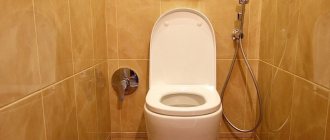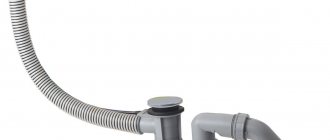Types of dry closets
Dry toilets come in liquid and peat types. In the first case, liquids are used that help break down solid fractions and liquefy feces.
In the second case, peat is used. The bacteria contained in the fossil decompose the waste. The dry mixture is poured into the upper tank. After using the toilet, use the handle on the top tank to sprinkle sewage into the storage tank. This type of plumbing equipment is often used in regions with cold climates due to the frost resistance of the mixture.
Reference! Most dry toilets are chemical because they use synthetic drugs. The prefix “bio” is correctly used for powder closets that use saprotrophic bacteria.
Types of dry closets
Types of antiseptics for country toilets
All means for disinfection and waste recycling can be divided into two large categories:
- chemical preparations based on various components;
- bioactivators , the active agent of which is bacteria.
Antiseptics differ in their composition, mechanism of action, properties, and scope of application.
According to lovers of country life, the following drugs are recognized as the most effective:
Image gallery
Photo from
Composition for pouring into portable country toilets
Assortment of products for autonomous sewerage
Biocompositions from the company RadugaPlus
Preparation for decomposition of waste products
Composition of liquids for dry toilets
Liquids for dry toilets are designed to break down and disinfect human waste products. There are three types of such products:
- Bioproducts include live bacteria that process human waste. They perfectly eliminate odor and do not harm the environment. They are used not only in dry closets, but also in cesspools.
- Ammonium liquids (usually HOUR) are used where access to oxygen is limited. Waste treated with these products can be composted. Such products should not be used when there is good access to oxygen. QAC stands for Quaternary Ammonium Compounds. They are included in disinfectants used, among other things, for cleaning premises. In terms of disinfecting properties, such preparations are inferior to chlorine-containing analogues. But they have a number of advantages - surface activity, antiseptic properties, low toxicity.
- Formaldehyde liquids are considered the most effective. Their disadvantage is high toxicity. The composition is used only when it is possible to discharge waste into the sewer system. Any other method of disposal is prohibited.
If the toilet is used outdoors, then choose products that do not freeze at sub-zero temperatures.
Video - Liquid for dry toilets
Comparison table of characteristics of reagents for dry toilets:
| The product's name | Type | View | Consumption per 10 l. | Price |
| Bioactivator | Dry mix | 1 m3 - 200-300 g | From 800 rub./50 l |
| Multicomponent filler | Dry mix | 1 m3 - 200-400 g | From RUR 649/30 l |
| Peat filler | Dry wood shavings | 1 m3 - 200-300 g | From 255 rub./30 l./2.5 kg |
| Peat filler | Dry mix | 1 m3 - 200-400 g | From 184 RUR/20 l |
| Peat filler | Dry mix | 1 m3 - 200-400 g | From 143 RUR/25 l |
| Sanitary product | Liquid | 30 ml | From RUB 1,149/780 ml |
| Deodorant | Liquid | 30 ml | From 325 rub./l |
| Bioactivator | Liquid | 100 ml | From 490 rub./l |
| Bioactivator | Liquid | 15-100 ml | From 396 RUR/l |
| Universal remedy | Liquid | 40 ml | From RUB 1,675/5 l |
| Sanitary product | Liquid | 75 ml | From 1190 rub./1.5 l. |
| Bioactivator | Liquid | 50 ml | From 490 rub./l |
| Bioactivator | Liquid | 70 ml | 1098 rub./l |
Manufacturer
The most popular products include liquid for dry toilets Thetford (Holland). The company produces a range of products with a wide range of effects. Excellent product characteristics contribute to the popularity of the brand.
Brief characteristics of the liquid for the lower tank:
- has a powerful deodorizing effect;
- quickly dissolves solid waste;
- contains no formaldehyde;
- does not allow gases to accumulate;
- facilitates emptying the tank from its contents and maintains its cleanliness;
- environmentally friendly product.
Cassette-type dry toilets require additional treatment from time to time. Thetford Cassette Tank Cleaner liquid will help fight lime deposits, clean the tank, and provide an additional deodorizing effect.
How to make liquid yourself from available products
You can make a preparation for a liquid dry closet yourself. It does not have the same pronounced septic properties. But this is a way out when special drugs suddenly run out.
The cooking process consists of the following steps:
- In a saucepan, mix 75 g of corn or potato starch with 25 g of table salt.
- Add 100 ml of cold water.
- Place the dishes on low heat and cook until you get a thick jelly consistency. The mixture is stirred all the time.
- Remove the container from the heat and leave for 1 minute to cool.
- Add 20 ml of table vinegar 9%, 3-4 drops of essential oil for aromatization.
- Mix again.
This composition is added to the lower tank. To make the tank easier to clean, you can additionally add 1 tbsp to the mixture. l toilet liquid soap.
Video - It doesn’t stink and doesn’t hurt your eyes. Smell from the toilet
Principle of operation
Modern latrines consist of two tanks, one of which is used as a receiving tank, and the other contains water for flushing. A consumable for the dry closet is added to it, allowing you to speed up the waste recycling process. It can be of both chemical and biological origin. And in order to choose the best option, you need to decide in advance how waste from the dry closet will be disposed of and where it will be disposed of in the future.
The use of these drugs is due to the lack of water, as happens in a regular sewer. Its role is played by sanitary liquid for dry toilets. Its addition to the tank leads to the formation of a film that prevents the spread of odors and helps ensure the aesthetics of the containers themselves.
Fillers for dry toilets
To fill the bottom tank of dry closets, peat-based products are used.
Peat for dry closets differs in composition from that used as fuel. As a rule, dry upland species are used, which absorb odors and moisture well. Lowland peat, which is valued in the energy sector, is not suitable - it is wet and clumps. When liquid enters, the raw material becomes compacted and loses its absorbent properties.
When purchasing a filler, you need to carefully study the composition. First of all, pay attention to the type of fossil. Some manufacturers use transition peat, without additives. The lumpy texture isn't the only downside. Such a product is poorly stored, has an unpleasant odor, and rots.
High-quality fillers contain auxiliary components - sawdust, dolomite flour, tree bark, etc.
To enhance the conversion of waste into compost, soil bacteria, microelements and organic additives are purchased. There are complex fillers that already include these components.
How to use fillers
The filler is poured into a special tank. One serving is 200–300 ml of the mixture. Monthly consumption is about 25 liters per person. The mixture is processed into fertilizer in approximately one year.
Video - How to clean a peat toilet
When using certain products, it is important to ensure that they are compatible. So, if the means for filling into the upper tank are based on chemicals, and those used in the storage tank are based on live bacteria, then they cannot be used simultaneously. Synthetic reagents will most likely kill microorganisms, and they will not be able to process waste into fertilizers.
Quality assessment criteria
To choose the most suitable liquid for your dry closet in the country, you should pay attention to the following parameters:
- duration of action: some liquids are most active in the first three to four days;
- others are most effective for about five to six days;
- still others completely process waste in only a week and a half;
It is better to choose liquid for a composting toilet, knowing where you will pour it
Voting for the best reagent for dry toilets
What reagent would you choose or recommend for chemical toilets?
Kekkila Hajusieppo
0.00 % ( 0 )
Torf+, 30 l Bioforce
0.00 % ( 0 )
Peat composition “Piteco” 20 l
0.00 % ( 0 )
Eco Peat Bio WC
0.00 % ( 0 )
Peat filler Gera
0.00 % ( 0 )
Aqua Kem Blue Concentrated
20.00 % ( 1 )
ECO Green BIO WC
20.00 % ( 1 )
Bioforce for the bottom cistern of a dry closet
0.00 % ( 0 )
Devon-N
0.00 % ( 0 )
Country assistant
0.00 % ( 0 )
Aqua Kem Green
40.00 % ( 2 )
Bioforce BioToilet L for lower tank
0.00 % ( 0 )
